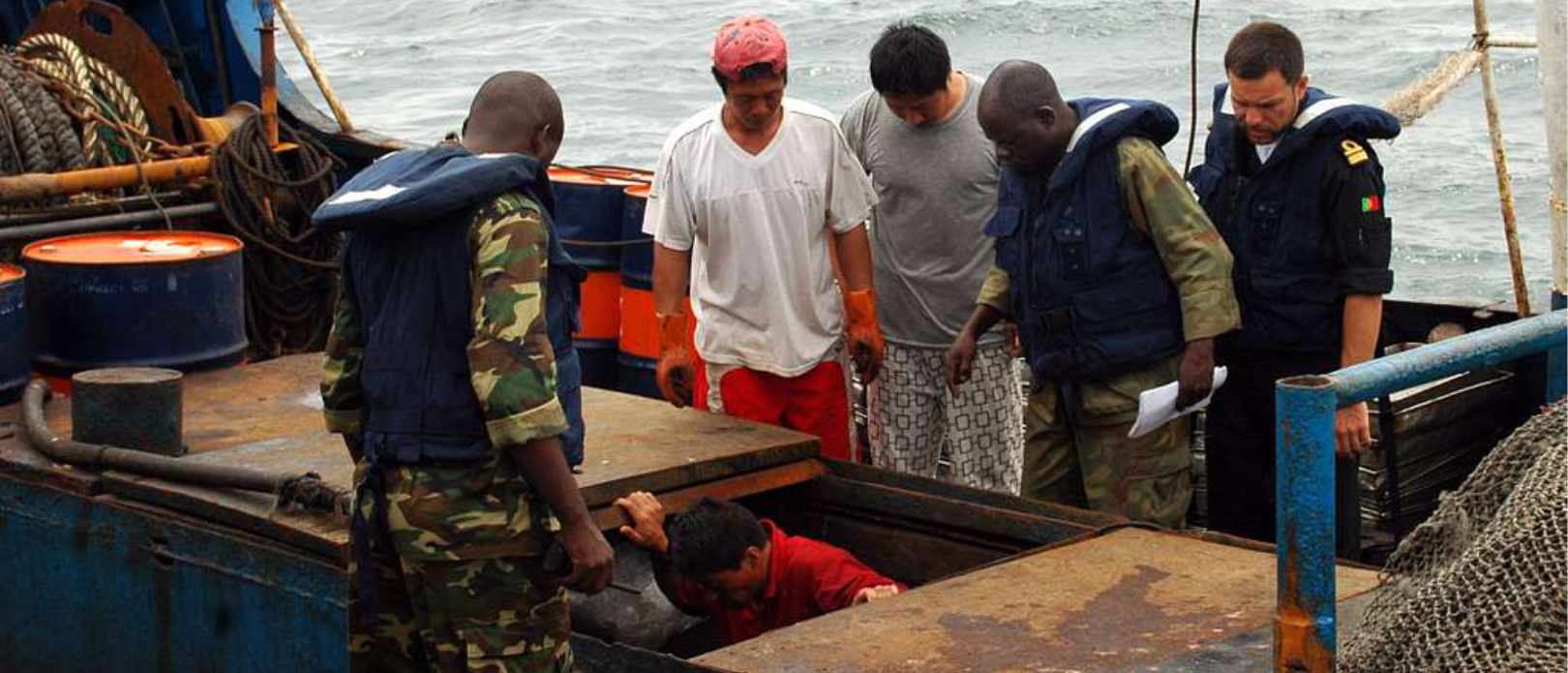FISHERIES CONFLICTS
A glimpse of the future can curb clashes at sea

Fisheries conflicts are projected to increase dramatically in the future. Scenario development can help avoid them
- Environmental, socioeconomic and political trends are analysed together to map out possible future scenarios for fisheries conflict
- The implications of these ongoing trends in four conflict-prone regions are explored through a creative scenario approach grounded in complexity science
- The result is a robust but accessible communication tool for improved anticipatory governance in the pursuit of future ocean security
FUTURE FISH FIGHTS: “It is 2045. After a deadly confrontation between small-scale fishers and massive international trawlers, fishers across West Africa have banded together to take back control of their fisheries and infrastructure.”
This is a quote from a study published in the journal One Earth which uses a narrative scenario approach to explore potential future fishery conflicts around the world.
The article concludes that fisheries conflicts are projected to increase dramatically due to factors like climate change, overfishing and habitat destruction.
The scenarios provide insights into future vulnerabilities of the complex fisheries sector in a way that has not been possible before.
Jessica Spijkers, first author
The study was done together with centre colleagues Andrew Merrie and Örjan Bodin, as well as a team of international experts from University of British Columbia, Stanford University, Stockholm Environment Institute, Stockholm International Peace Research Institute, University of Denver, Memorial University of Newfoundland and Colorado State University.
What drives a conflict?
The future conflict scenarios were built for four regions in which fisheries conflict is either a current or a pending threat. They can be used to support decision making by building capacity for better anticipatory governance of an unpredictable future.
The scenarios take place between the years 2030 to 2060 in:
The North-East Atlantic (“Scramble for the Atlantic ”)
The East China Sea (“The Remodeled Empire”)
The coast of West Africa (“Oceanic Decolonization”)
The Arctic (“Polar Renaissance”)
In total, 22 drivers and conditions linked to the onset of fisheries conflict were identified. Among them were low quality governance, ethnic tensions and unequal distribution of benefits.
Future ocean security
The four regions were not equally vulnerable to fisheries conflict in the scenarios. For example, the West Africa scenario displayed twice as many “magnified drivers and conditions” as the North East Atlantic scenario.
However, this does not imply that West Africa alone requires immediate attention. Climate change and increased demand for seafood are some of the many global trends that can cause systemic failures all over our increasingly hyper-connected world.
An important point is that two of the scenarios result in situations where rising conflict actually leads to transformative conflict resolution, one scenario ends at a point of intense conflict and the final scenario leads to a difficult stalemate.
As such, the increased likelihood of fisheries conflict in the future does not necessarily mean worse outcomes for people and planet.
“Global society cannot rise to the challenge of preventing regional crises by solely acting on local scales; the response required must be consistent with our knowledge of complex, globally interdependent systems,” they write.
Methodology
The evidence base for the four scenarios was assembled on the basis of an expert workshop, longitudinal conflict data (from earlier work by the lead author on the International Fisheries Conflict Database) and document analysis. The expert workshop comprised 11 participants hosted at the facilities of the National Center for Ecological Analysis and Synthesis in October 2018.
Participants included 11 researchers with expertise in environmental governance, peace and conflict studies, ecology, fisheries, socioecological systems, sustainable development, human geography, law, and political science.
The authors drew together the different drivers, conditions, and trends from the compiled evidence to create the four narrative scenarios by using storytelling techniques. Storytelling techniques include practices such as the use of the emotional lens of a fictional character affected by a changed future, the creation of narrative plots to showcase the causal structure of scientific information in an intuitive manner, and the magnification of certain trends for narrative impact.
Read the full scenarios and view the animated illustrations that accompany each of the scenarios
Spijkers, J., Merrie, A., Wabnitz, C.C., Osborne, M., Mobjörk, M., Bodin, Ö., Selig, E.R., Le Billon, P., Hendrix, C.S., Singh, G.G. and Keys, P.W., 2021. Exploring the future of fishery conflict through narrative scenarios. One Earth. DOI: https://doi.org/10.1016/j.oneear.2021.02.004
Read the full scenarios and view the animated illustrations that accompany each of the scenarios
Phone: +468 16 2000
Organisation number: 202100-3062
VAT No: SE202100306201






